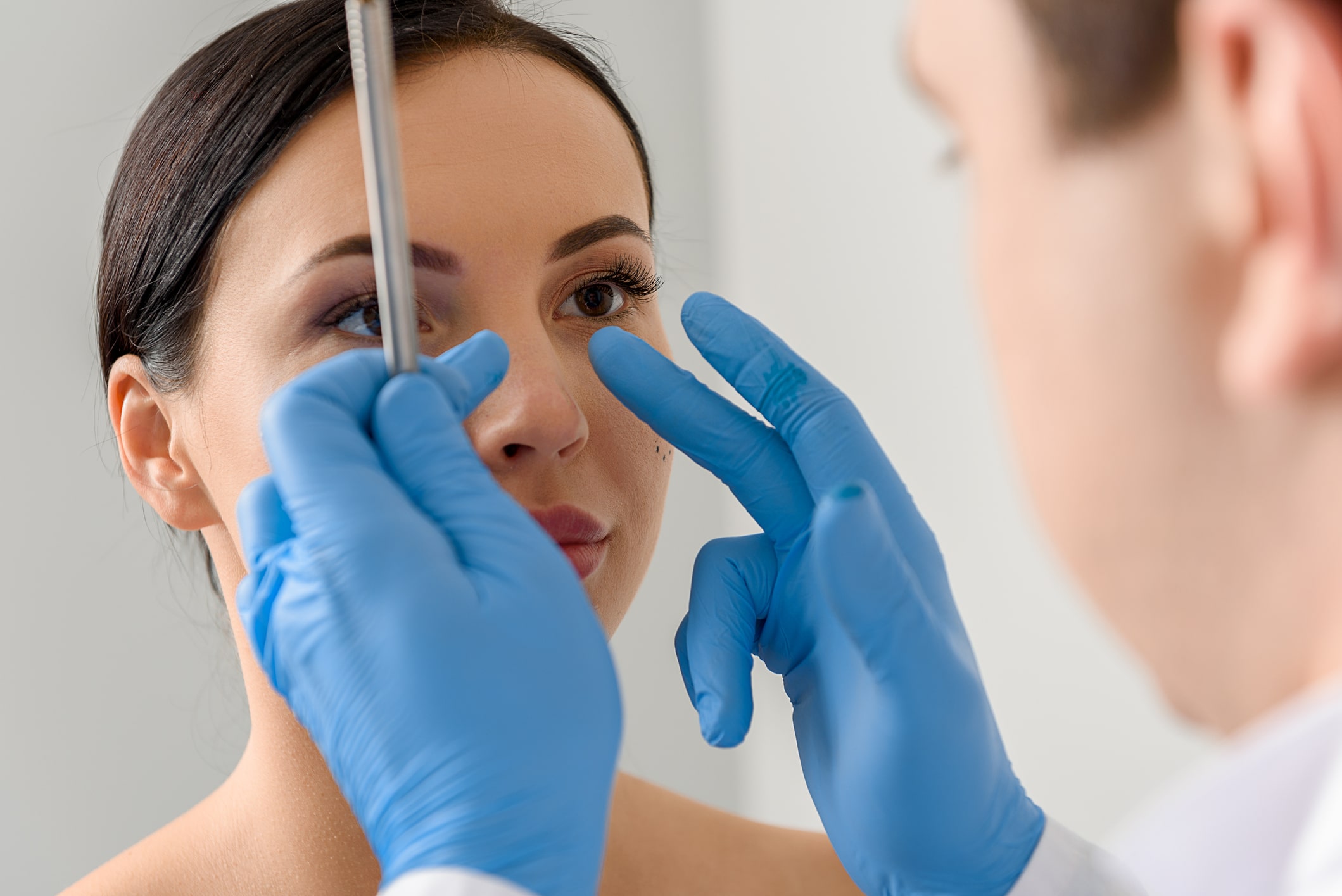Rhinoplasty
What is a rhinoplasty?
Rhinoplasty, commonly known as a nose job, is the surgical correction of the external nose. Nose surgery is performed to alter the cosmetic appearance of the nose.
Who is a good candidate for a Rhinoplasty?
People who desire to alter the cosmetic appearance of the nose are good candidates. Typical complaints include the following:
- Nose is too large
- Irregular shape
- Tip is too large or not well defined
- Nasal hump
Many other aesthetic deformities can warrant the desire for a rhinoplasty. The best nose is a nose that isn’t noticed. Prominent nasal features will draw the viewers attention to the nose instead of the persons other facial features. The purpose of the procedure is to remove the unwanted aesthetic nasal features and leave the nose appearing natural and symmetric.
rhinoplasty Benefits
Having an aesthetically unpleasant nose can make a person lack confidence. Whether that be in our personal relationships or in the work place, this can inhibit social and romantic interaction. Rhinoplasty can remove this psychological barrier and help the patient feel uninhibited by concerns about their appearance.
How do I prepare for my rhinoplasty procedure?
Patients have a detailed conversation with Dr. Slaughter where he will review with them the details of the aesthetic changes that he would recommend for your rhinoplasty. Patients will frequently also bring pictures that are representative of how they wish their noses to appear. Dr. Slaughter will describe the procedure in detail and answer the patient’s questions.
The Rhinoplasty Procedure
Dr. Slaughter performs nose surgery at his office in Austin, TX. The patient arrives 1 hour before the procedure for preparation. The patient undergoes IV sedation so they do not feel any pain during the procedure. A small incision at the base of the nose, between the nostrils, is made for Dr. Slaughter to access the structures of the nose.
The specifics of the procedure vary from patient to patient but typically the nasal bones may be reshaped to reduce any “hump”. Any irregularities or lean of the bones is also corrected during nose surgery.
The nasal tip may be reshaped to remove irregularities, prominence, or bulbous nature. The purpose is to create a nicely shaped nasal tip that is symmetric with the nasal bones. Nasal projection, rotation, balance are all addressed.
Rhinoplasty is an art and Dr. Slaughter has more than 25 years of experience performing the rhinoplasty procedure. The small incision is closed with dissolvable suture and a small external splint is applied. There is no packing inside the nose and the patient will be able to breathe through their nose after the procedure. The procedure typically take about an hour and the patient is able to leave the office in about 30 minutes, with a friend or family driving them home.
Nose Surgery recovery
The patient may take pain medication for a couple of days, but the procedure is generally tolerable. There may be some bruising around the eyes which can take up to 2 weeks to clear. There is an external splint for about 5 days which is removed in our office by our nurse practitioner. The small incision between the nostrils will require some antibiotic ointment for about 2 weeks and typically heals imperceptible within 3 weeks. Most patients could work within a couple of days and can resume aerobic exercise in about a week.
How soon will I see results after a Nose surgery?
The nose will be swollen, especially the tip, for about 2 weeks. By 4 weeks the nose is about 90% healed but there is subtle improvements for up to a year.
Can a rhinoplasty fix my sinus problems?
Frequently internal sinus procedures may be performed to address these issues, at the same time of the rhinoplasty. These sinus procedures include the following:
Is Nose Surgery painful?
Our Sinus & Snoring Specialists patients usually are surprised at how little pain is involved with their recovery from nose surgery with Dr. Slaughter. The day after their procedure, most patients equate the level of pain between 0 and 4 on a scale of 1 to 10. Swelling is much more of an issue with these procedures than is pain.
What will my scarring be like after rhinoplasty?
Scarring is not an issue with rhinoplasty. Even when Dr. Slaughter uses the open method, the only incision is made on the columella on the bottom of the nose between your nostrils. This small incision is barely noticeable, and it fades dramatically with time.
Risks of Nose Surgery
This is surgery, so the corresponding risks of infection, reaction to anesthesia, poor wound healing, and the like exist. But these are rare.
The risks specific to rhinoplasty are these:
- Difficulty with breathing through the nose
- Permanent numbness in and around your nose
- The possibility of an uneven-looking nose
- Pain, discoloration, or swelling that may endure
- A perforated septum
- Need for revision surgery
The main risk with nose surgery is the patient not being satisfied with the outcome. That’s why you should trust this surgery only to a board-certified otolaryngology surgeon with extensive experience, such as Dr. Slaughter. These are delicate surgeries and should only be trusted to an expert with the anatomy of the face.
Schedule a Consultation for a Rhinoplasty in Austin
If you have an interest in learning more about rhinoplasty surgery, contact our office at 512.601.0303 to schedule a consultation. Our practice serves Austin and surrounding areas in Texas.



